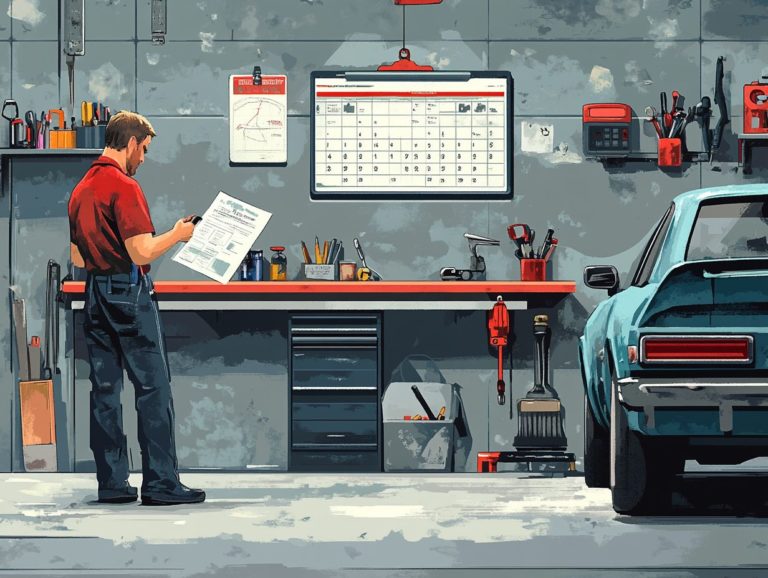Signs It’s Time for a Tire Change
Tire wear is an unavoidable aspect of owning a vehicle, but knowing how your tires wear is key to keeping you safe and your vehicle running longer!
This article delves into the various types of tire wear and their underlying causes, guiding you on how to check your tires properly and highlighting the crucial signs that signal it’s time for a replacement.
You ll also discover the different types of tires, their lifespans, and whether you should take on tire changes yourself or enlist the expertise of a professional.
Continue reading to ensure your tires are always in prime condition!
Contents
- Key Takeaways:
- Understanding Tire Wear
- How to Check Your Tires
- Signs that Indicate a Tire Change
- When to Change Your Tires
- Types of Tires and Their Lifespan
- Steps to Take When Changing Tires
- Frequently Asked Questions
- What are some signs that it’s time for a tire change?
- How often should I check my tires for wear and tear?
- What is the recommended tread depth for tires?
- Can I just replace one tire or do I need to replace all four?
- How long do tires typically last before needing to be replaced?
- What are the consequences of driving on worn or damaged tires?
Key Takeaways:
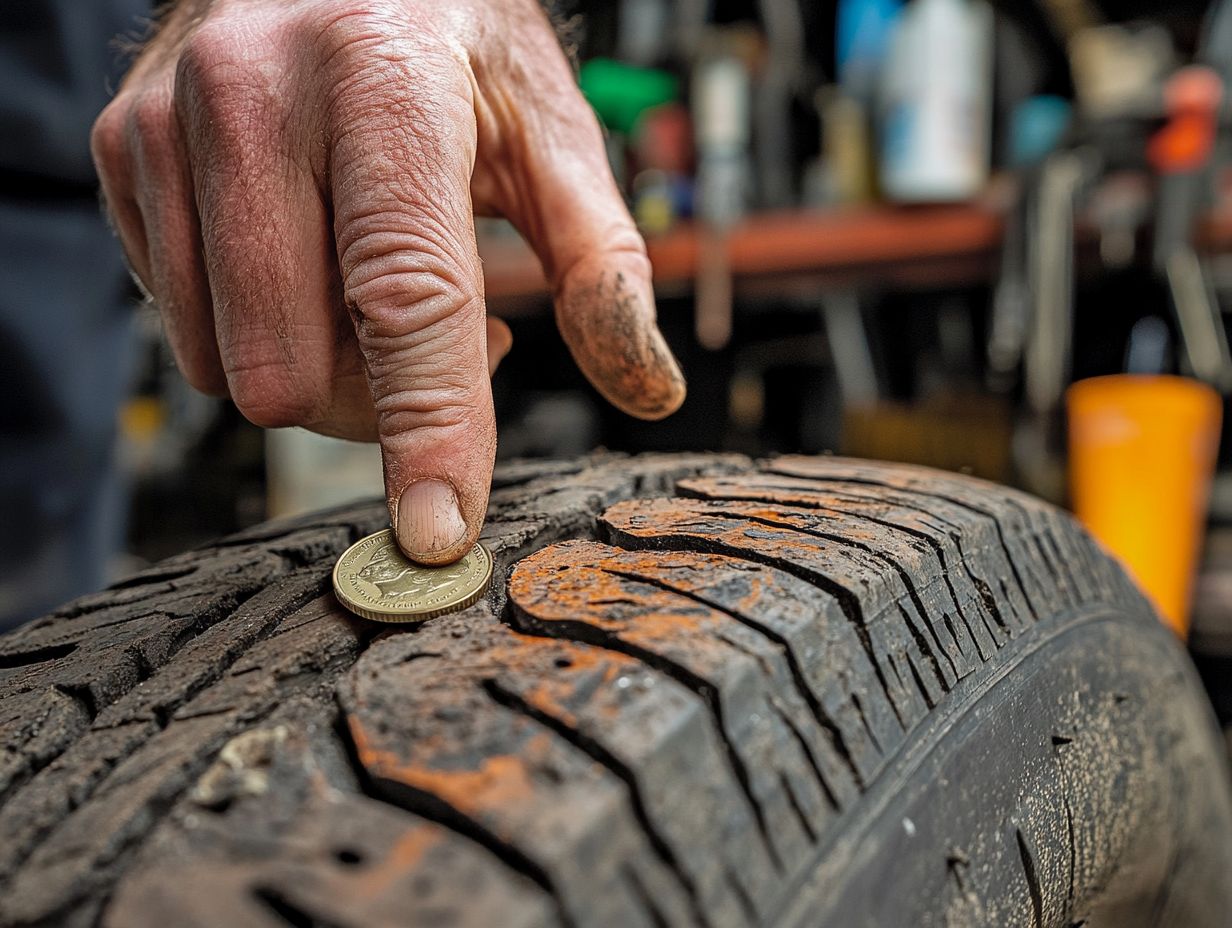
- Check your tires regularly to keep them safe!
- Be aware of visual and performance indicators that signal the need for a tire change.
- Consider recommended mileage and time frames for changing tires and compare different tire options for lifespan.
Understanding Tire Wear
Understanding tire wear is crucial for your vehicle’s safety and longevity, giving you the power to make informed maintenance choices about when to replace or inspect your tires.
As a vehicle owner, it’s essential to appreciate the importance of monitoring the grooves on your tires and spotting signs of uneven wear, sidewall cracks, or bubbling.
Being knowledgeable about potential tire damage not only helps you avoid accidents but also enhances overall traffic safety, particularly in areas like Phoenix, Glendale, and Yuma, where diverse road conditions can accelerate wear patterns.
Professional mechanics, such as those at Community Tire Pros under the guidance of Howard Fleischmann, emphasize the necessity of regular tire inspections to ensure your tires perform optimally and last longer.
Types of Tire Wear and Causes
You should be aware of several types of tire wear that can affect your vehicle. For instance, uneven wear might signal underlying mechanical issues, while sidewall cracks could lead to tire damage or even failure.
Among these wear patterns, center wear typically suggests over-inflation, whereas edge wear may indicate under-inflation or misalignment. Then there’s cupping, which appears as a wavy pattern across the tread and often points to problems with your vehicle’s suspension, which refers to the system that helps keep your vehicle stable while driving, or balance.
These different types of wear aren’t just random occurrences; they arise from factors like improper tire pressure, which can significantly alter how your tires make contact with the road, and specific road conditions that may worsen wear. Recognizing these signs is essential.
Consult a professional mechanic to accurately diagnose any issues, ensuring your safety and extending the lifespan of your tires.
How to Check Your Tires
Make it a habit to check your tires regularly! This practice is essential for ensuring optimal vehicle performance and safety. It involves straightforward yet effective methods to assess tire pressure, tread depth, and the overall condition of your tires.
Prioritizing this simple maintenance practice can make a significant difference in your driving experience.
Methods for Assessing Tire Condition
Assessing your tire condition involves several methods, starting with visual inspections for tread wear and utilizing a tread wear indicator to measure depth accurately.
Plus these checks, it’s vital to perform regular visual inspections for cracks, bulges, and any irregularities on the tire surface. Spotting potential issues early can save you from bigger problems down the road. A tread depth gauge is a handy tool that helps you determine if your tires have enough grip, which is vital for safe driving in a variety of weather conditions.
Consistently monitoring tire pressure is another key step to avoid underinflation or overinflation, both of which can lead to premature tire wear and increase the risk of blowouts. Each of these assessment methods plays a crucial role in maintaining tire health, effectively reducing the risk of accidents and enhancing overall traffic safety.
Signs that Indicate a Tire Change
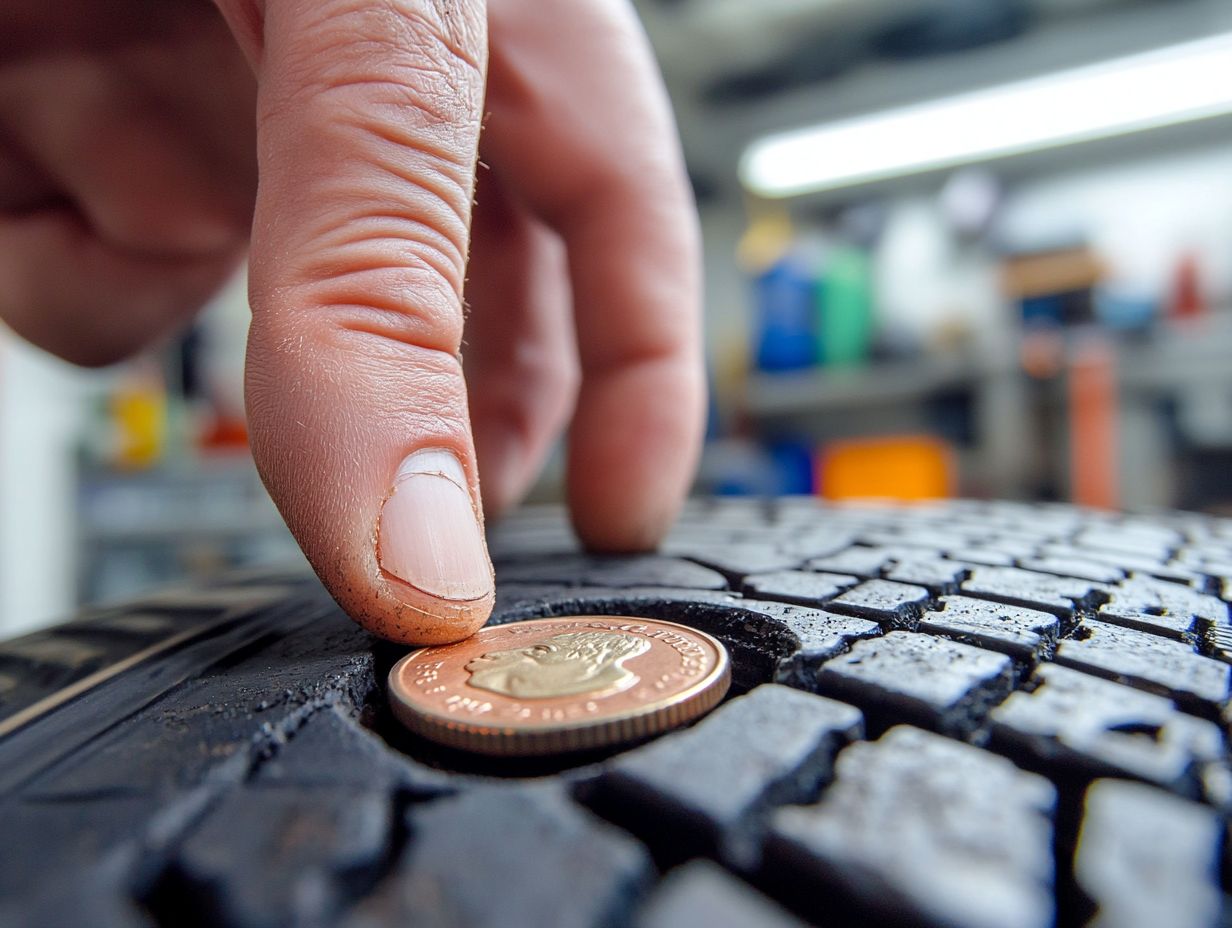
Recognizing the signs that indicate it’s time for a tire change is essential for maintaining both your vehicle’s safety and performance. Look out for uneven wear patterns that can compromise handling, as well as visible damage like sidewall cracks or bubbling tires, which often signal an impending failure.
Staying attentive to these indicators ensures a smoother ride and peace of mind on the road.
Visual and Performance Indicators
Visual indicators, such as worn tread patterns, along with performance signs like vibrations, play a crucial role in helping you determine when it s time for a tire change.
Watch out for shallow tread depth! It can drastically reduce your tire’s grip on wet roads, resulting in longer braking distances and diminished handling performance.
When you inspect the sidewalls, keep an eye out for any visible cracks or bulges; these can signal that your tire is at risk of failure. Such issues not only elevate the chances of accidents but also detract from your overall driving experience.
By remaining vigilant about these signs, you can ensure the safety and reliability of your vehicle, preventing costly mishaps while maintaining optimal performance on the road.
When to Change Your Tires
Understanding when to change your tires is crucial for ensuring traffic safety and minimizing the risk of accidents. Recommended mileage and time frames can vary significantly based on your driving habits and the quality of your tires.
Recommended Mileage and Time Frames
The recommended mileage for changing tires typically ranges between 25,000 to 50,000 miles, but several factors can significantly influence this timeframe.
Your individual driving habits play a crucial role; aggressive acceleration and frequent hard braking can lead to quicker tire wear, affecting your overall mileage expectations. Environmental conditions such as extreme temperatures and rough roads can speed up tire wear.
Different tire types also matter; for example, performance tires generally wear out faster than all-season tires. Therefore, it’s essential to conduct regular inspections to assess tread depth how deep the grooves in your tire are, affecting traction and overall tire health. Seeking professional assessments will keep you informed about your tires’ condition, ensuring not just longevity but also safety on the road.
Types of Tires and Their Lifespan
Understanding the various types of tires available and their respective lifespans is essential for effective car maintenance. Different tire types cater to specific driving needs and come with varying degrees of durability.
Comparing Different Tire Options
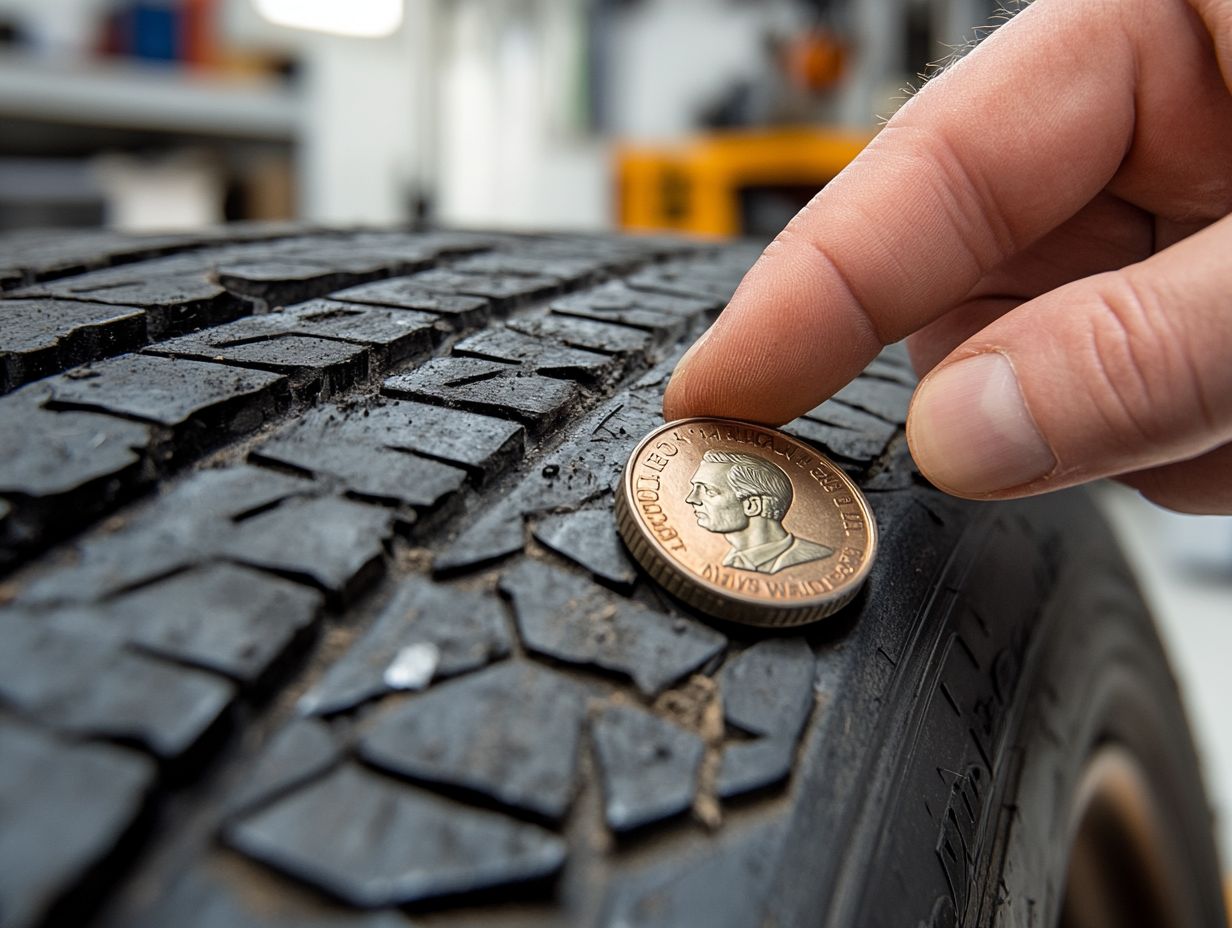
Comparing different tire options is crucial for selecting the right car tires that align with your driving conditions and preferences, ensuring both performance and safety.
As you explore the various types available, you ll quickly realize that each option comes with its own set of benefits and drawbacks. All-season tires offer a versatile solution, giving you decent traction in both wet and dry conditions, but they might struggle when faced with extreme weather.
On the other hand, performance tires are designed for driving enthusiasts; they enhance handling and grip during spirited drives but often wear out faster and can be less comfortable on rough surfaces. If you re navigating icy or snowy conditions, winter tires truly shine, offering superior grip and safety, although they may not fare well in warmer temperatures.
Understanding these distinctions gives you the power to make well-informed choices based on your unique driving habits and environmental factors.
Steps to Take When Changing Tires
Regarding changing tires, grasping the steps involved gives you the power to determine whether to embrace a DIY approach or to engage professional services for tire maintenance.
Don t wait! Check your tires today to ensure your safety on the road.
DIY vs Professional Services
Deciding between changing your tires yourself or opting for professional services hinges on your skill level, the tools at your disposal, and, most importantly, the safety of your vehicle.
If you’re comfortable with basic car maintenance and have the necessary equipment, consider changing a tire at home. It can save you time and money.
However, if you face complex issues like a punctured sidewall or need specific balancing or alignment, call a professional. This ensures safety and proper installation, giving you peace of mind.
Ultimately, knowing when to bring in experts can enhance your vehicle’s long-term reliability.
Frequently Asked Questions
What are some signs that it’s time for a tire change?
Some common signs your tires need immediate attention include low tire tread depth, cracks or bulges in the sidewall, uneven wear patterns, and losing air in your tires.
How often should I check my tires for wear and tear?
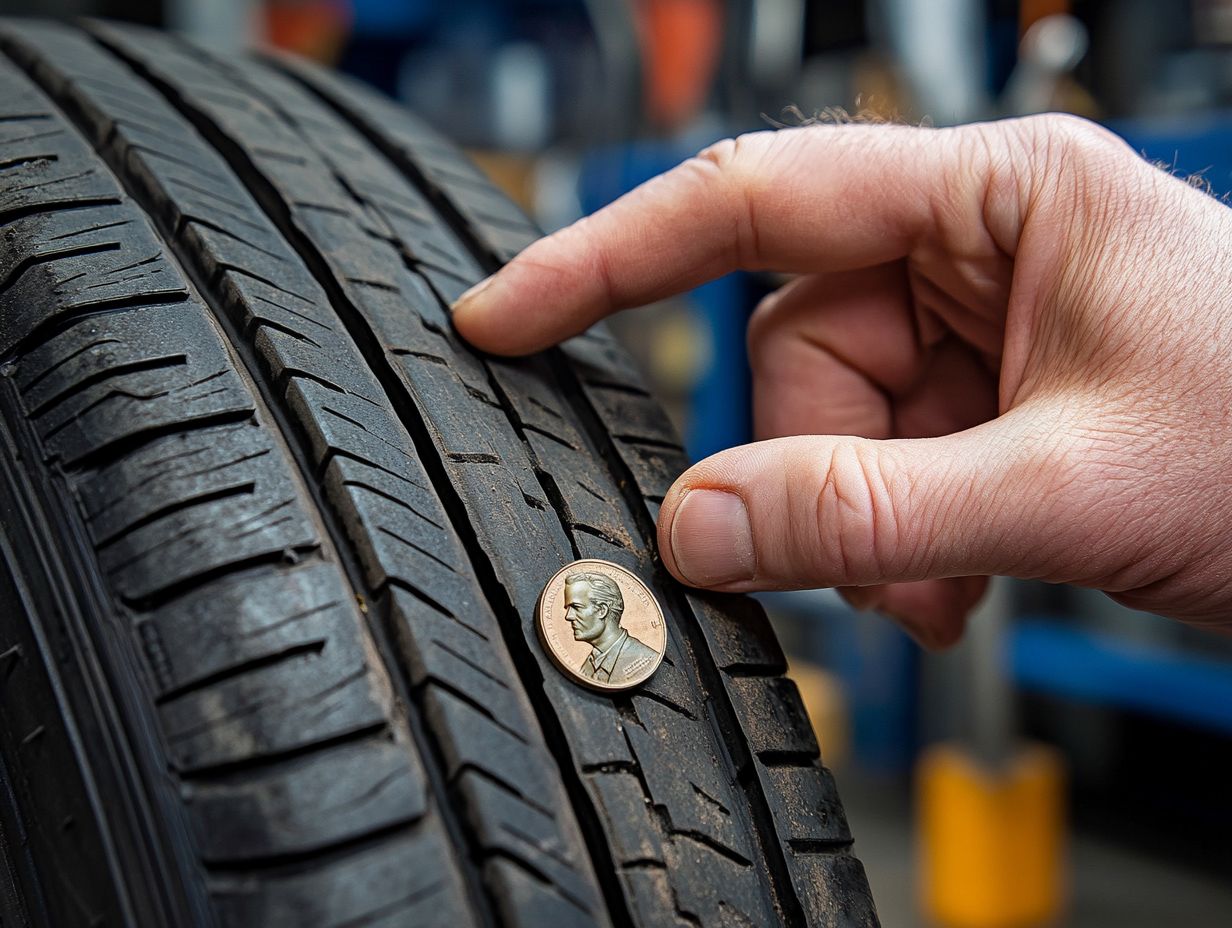
It’s recommended to check your tires for wear and tear at least once a month or before going on a long road trip. This will help ensure your tires are in good condition and can keep you safe on the road.
What is the recommended tread depth for tires?
The recommended tread depth for tires is at least 2/32 of an inch. This is the minimum depth required for safe driving, and anything less than that should be replaced immediately.
Can I just replace one tire or do I need to replace all four?
It’s generally recommended to replace all four tires at the same time. However, if one tire is significantly more worn or damaged than the others, you can replace just that one. Keep in mind that mismatched tires can affect your car’s handling and performance.
How long do tires typically last before needing to be replaced?
The average lifespan of a tire is around 40,000-50,000 miles, but this can vary depending on the type of tire, driving habits, and road conditions. Regularly check your tires for wear and tear, regardless of mileage.
What are the consequences of driving on worn or damaged tires?
Driving on worn or damaged tires can greatly increase your risk of accidents and blowouts. It can also decrease your car’s handling and performance, leading to costly repairs. Replace tires when necessary to ensure safe and efficient driving.
Don t wait until your tires are worn check them today for a safer drive!

